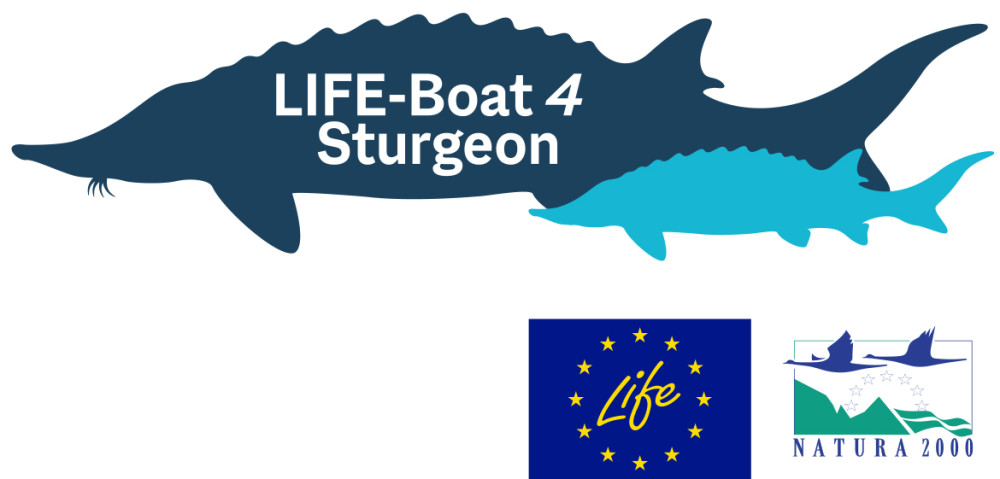Six main conservation measures will be implemented and they include establishing literally an actual Life boat.
- Building the LIFE Boat: The actual “LIFE-Boat”, will be built on an old freight ship and become a floating hatchery, anchored in the Danube in Vienna (Austria). This hatchery will be operated by the University of Natural Resources and Life Sciences (BOKU) according to scientific best knowledge. In addition, a similar hatchery to keep sturgeon broodstock will be built along the Koros river in Hungary, as a back up facility to minimise any potential risks. A smaller hatchery container (only used to raise sturgeons for immediate releases) will be installed on the Mur’s riverbank (Slovenia).
- Establishing captive broodstock: The aim is to establish genetically diverse captive broodstocks of mature sturgeon of Danube origin for the species Russian sturgeon, sterlet, stellate sturgeon and beluga sturgeon. As sturgeon mature very late, already mature and captive fish will be bought from various sturgeon caviar farms after being tested genetically.
- Rearing and releasing of juvenile fish: After reproducing the parent sturgeons, their youngs will be reared and released as juvenile fish. These rearing techniques will include state of-the-art methodologies regarding imprinting of homing behaviour and fitness for survival. WWF will support the release of the sturgeons that need to migrate to the Black Sea, where they spend a couple of years to grow to their full size.
- Protecting of released fish in the wild: This part is WWFs main role in the project. Through cooperation with the local fishing communities and the fishery authorities, we create awareness to the reintroductions and herby help to secure a safe passage for the released young sturgeon towards the Black Sea.
- Implementing a standardized monitoring programme in all countries involved in the project using environmental DNA and tagging to track the population’s development and the success of the reintroduction measures.
- Awareness raising: Promoting extensive public engagement in the project to significantly improve the general public’s awareness about the importance of healthy river ecosystems and species such as sturgeons.
From 2022 to 2030, the project partners will be implementing six conservation measures to rescue. The project partners include the University of Natural Resources and Life Sciences, Vienna, the Austrian Federal Ministry of Agriculture, Forestry, Regions and Water Management, viadonau, the City of Vienna, WWF Romania, WWF Ukraine, WWF Bulgaria, Revivo and MATE. The majority of the funding is provided by the EU through the LIFE-Programme.



